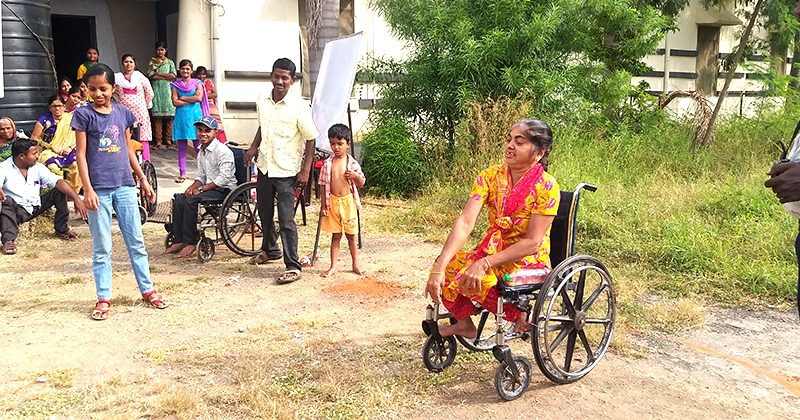Overview
Accessibility ramps and railings
OEI recognizes the importance of accessibility for individuals with disabilities, especially in their homes and schools. Our initiative focuses on creating inclusive environments by providing accessibility ramps and railings. These modifications help individuals with disabilities navigate their surroundings with greater ease and independence. By installing ramps and railings, we aim to remove barriers and promote inclusivity, enabling people with disabilities to fully participate in their daily activities. Our efforts extend to both homes and schools, ensuring that individuals have equal access to education, employment, and social opportunities. Through these accessibility modifications, OEI strives to empower individuals with disabilities, enhance their quality of life, and foster a more inclusive society.
The Process
The process of implementing accessibility ramps and railings for people with disabilities at their homes and schools by OEI involves several steps:
Needs Assessment: OEI conducts a comprehensive assessment to identify the specific accessibility requirements of individuals with disabilities in their homes and schools. This assessment considers factors such as mobility limitations, architectural barriers, and safety concerns.
Design and Planning: Based on the needs assessment, OEI develops a customized design plan for the installation of accessibility ramps and railings. This includes determining the optimal location, size, and specifications of the ramps and railings to ensure they meet the individual’s requirements and comply with accessibility guidelines.
Construction and Installation: OEI collaborates with qualified professionals and construction teams to construct and install the accessibility ramps and railings. The construction process follows the design plan, ensuring structural integrity and adherence to safety standards.
Testing and Evaluation: Once the ramps and railings are installed, OEI conducts thorough testing and evaluation to ensure their functionality, durability, and compliance with accessibility standards. This involves assessing factors such as slope gradient, handrail stability, and overall usability.
Training and Education: OEI provides training and education to individuals with disabilities, their families, and relevant stakeholders on the proper use and maintenance of the accessibility ramps and railings. This empowers them to make the most of the installed infrastructure and promotes a safe and inclusive environment.
Ongoing Support and Maintenance: OEI offers ongoing support and maintenance services to address any issues or repairs related to the accessibility ramps and railings. This ensures the long-term functionality and sustainability of the infrastructure.
Through this process, OEI aims to create accessible environments that promote independence, inclusion, and equal opportunities for individuals with disabilities in their homes and schools.
OEI installs accessibility ramps and railings to empower people with disabilities in their homes and schools.
FAQ's
Few of the most asked questions – answered.
Accessibility ramps and railings are structures designed to provide a safe and accessible pathway for people with disabilities, particularly those using mobility aids such as wheelchairs, walkers, or crutches. Ramps enable individuals to navigate elevation changes, while railings offer support and stability.
Accessibility ramps and railings benefit people with disabilities who face mobility challenges, including individuals who use wheelchairs, walkers, or other assistive devices. These structures also provide convenience and safety for individuals with temporary injuries or age-related limitations.
Accessibility ramps and railings can be installed in various locations, such as homes, schools, public buildings, offices, and other areas where accessibility is essential. They are typically placed at entryways, stairs, or any area where there is an elevation change.
By installing accessibility ramps and railings, individuals with disabilities gain greater independence and mobility. These structures enable them to navigate spaces with ease, access buildings, and participate in daily activities without barriers or assistance.
Yes, OEI ensures that accessibility ramps and railings comply with safety regulations and accessibility standards. The designs and installations are conducted by professionals with expertise in accessibility guidelines and building codes.
Yes, OEI provides customized solutions based on the specific needs and requirements of individuals with disabilities. The ramps and railings can be tailored to accommodate different mobility devices, individual preferences, and architectural constraints.
The longevity of accessibility ramps and railings depends on various factors, including the quality of materials, maintenance practices, and usage. With proper care and maintenance, these structures can last for many years, providing continued accessibility benefits.


